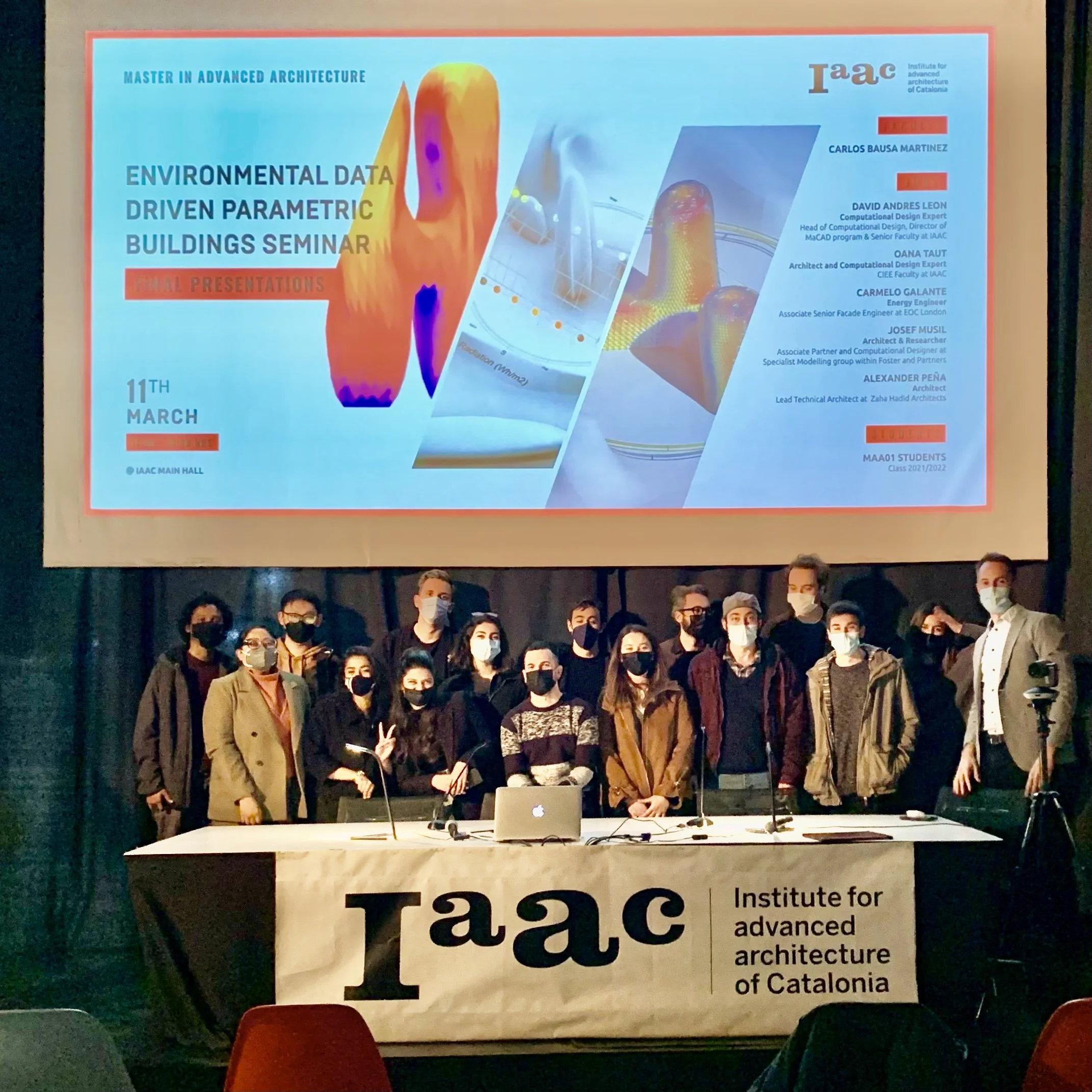(February and March 2022)
This workshop focused on workflows used to create passive architectures to target Net Zero and Low Carbon solutions. After COP26, According to the latest UN climate reports, Architecture, and the construction process alone, are responsible for almost 40% of all the CO2 emissions humans are responsible for, having a greater impact than Transportation or other industrial processes like food production and agriculture on their own. Architectural Envelopes design is what has a major impact on defining cooling and heating loads accounting for an average of 75% of the operational energy total consumption, over its life cycle. If we want to create efficient buildings to reduce the impact on Climate Change, we´ll need to focus on studying how to create more efficient building envelopes that could have passive behaviour, and at the same time integrate the use of renewables on site, to help on the detachment of buildings from fossil fuels.
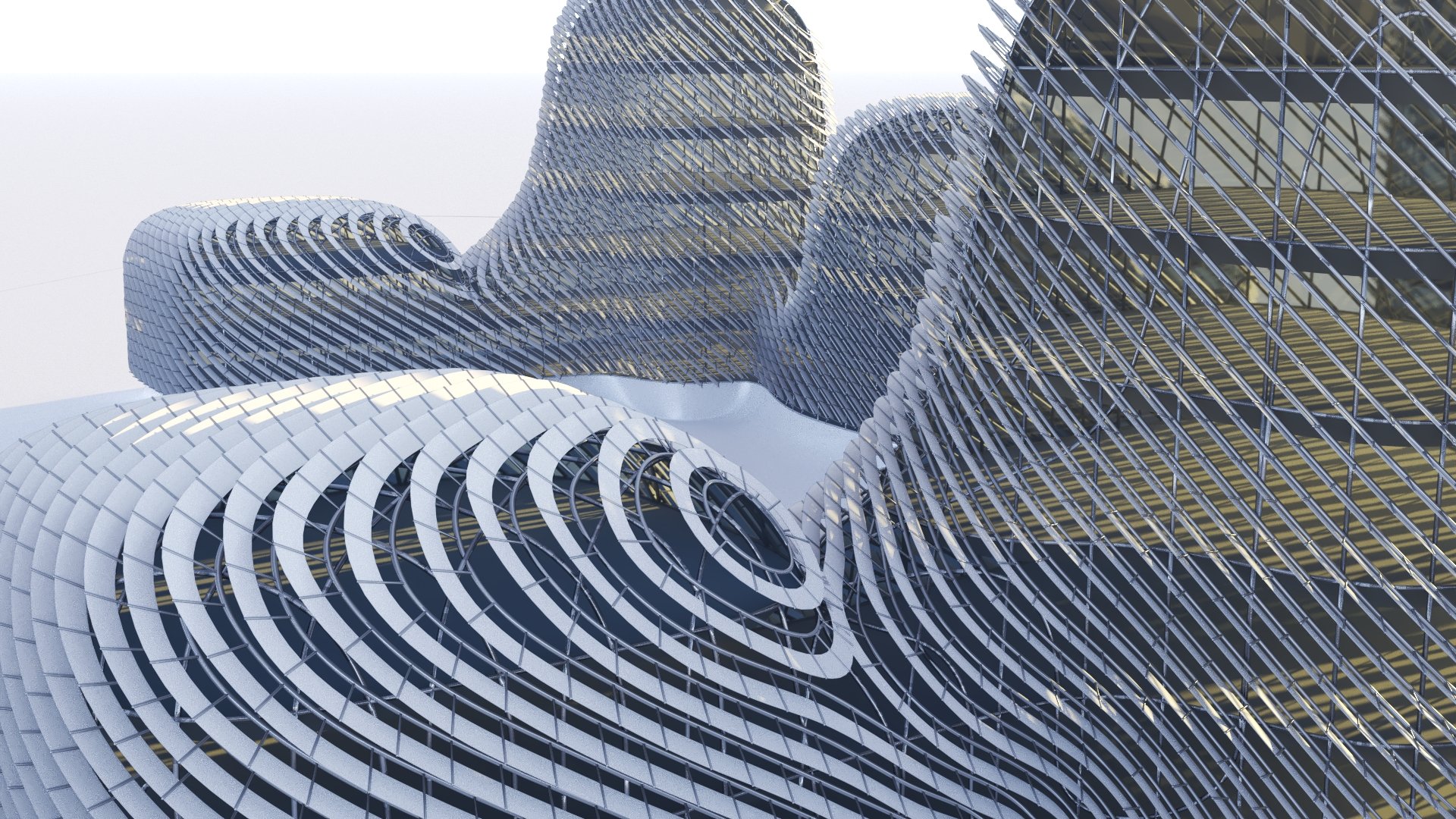
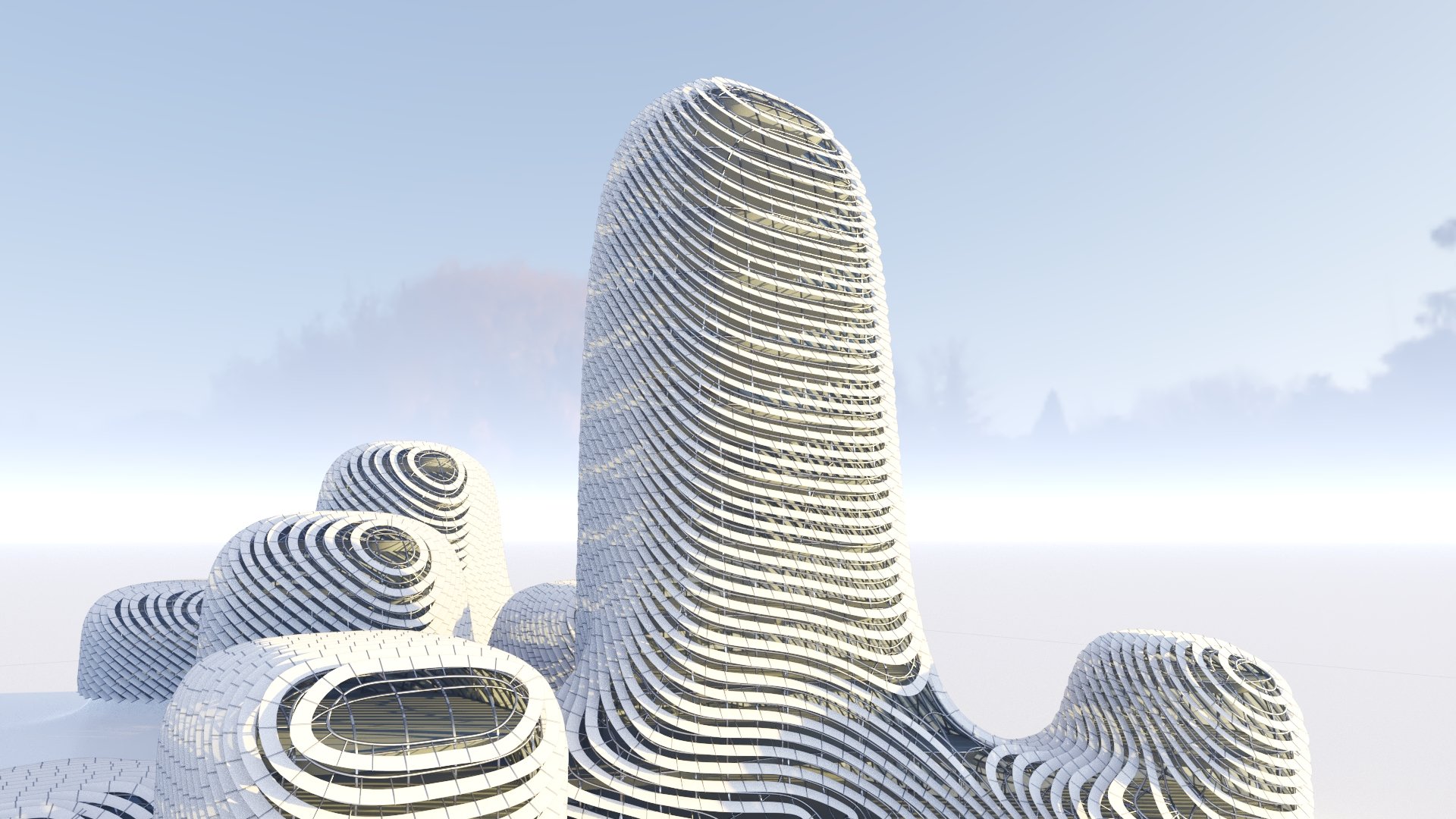
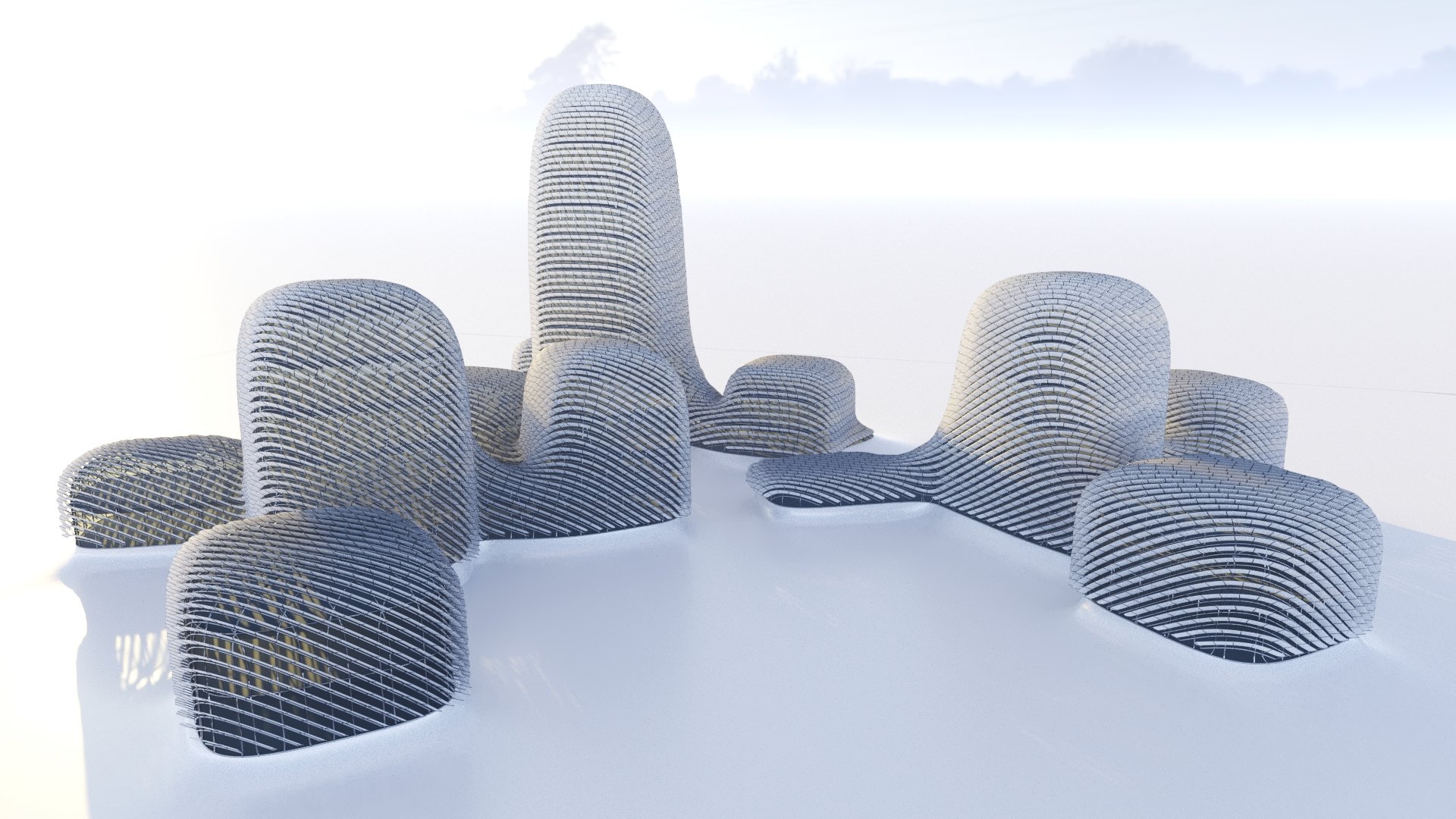
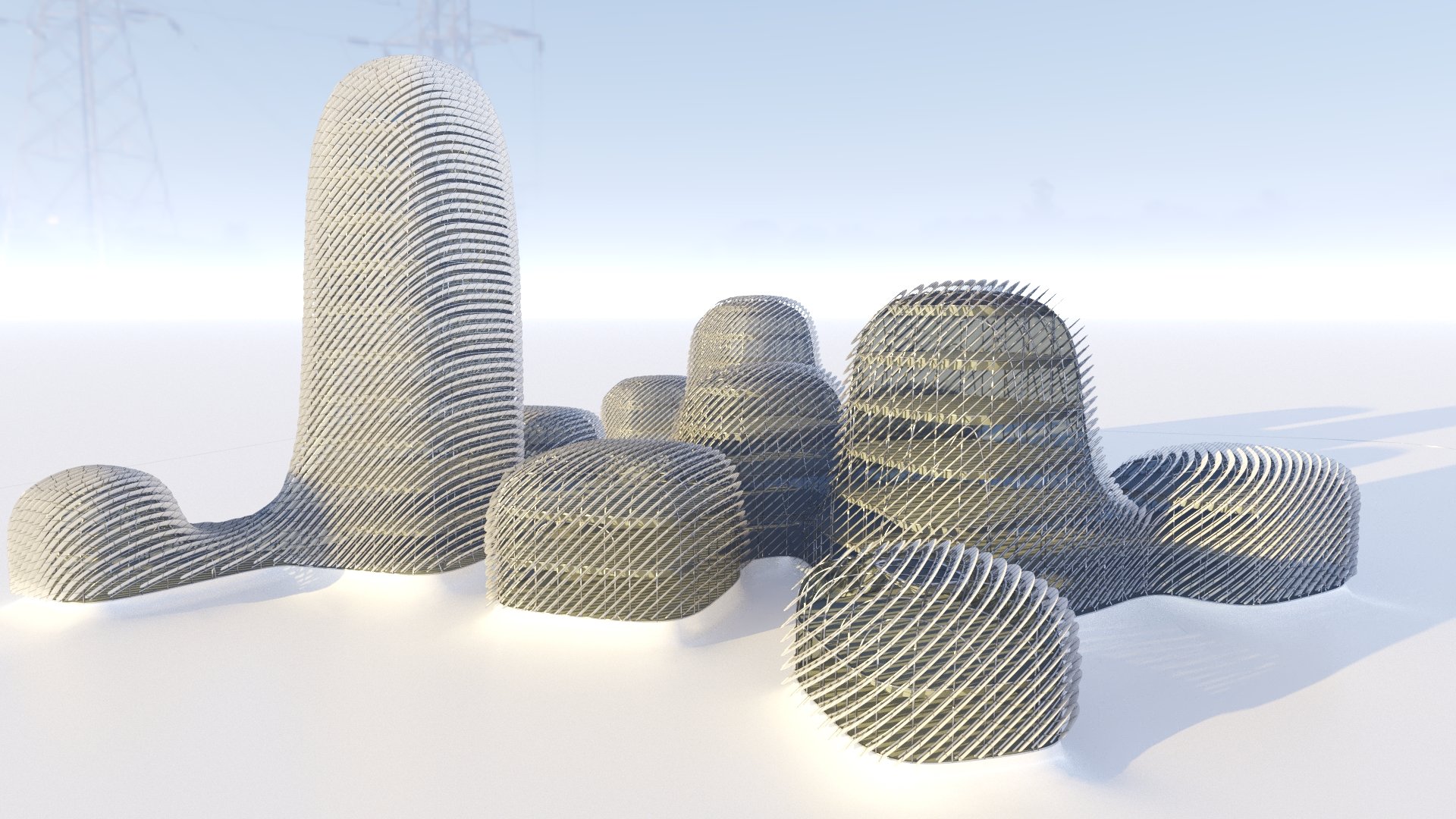
Over the evolution of this workshop with the Iaac Students, we looked at how to create parametric passive buildings, targeting the achievement of Operational Net Zero buildings, to define the next generation of carbon-neutral architectures.
We used algorithms based on Ladybug an honeybee tools within grasshopper for rhino, to understand how to inform design decisions with environmental Analysis. Parametners like Solar exposure, indoor Daylight distribution and Energy Balance, help us to understand the impact that our facades will have in the operational energy demand. With them, we can define new facade envelopes able to cope with different climatic conditions.
